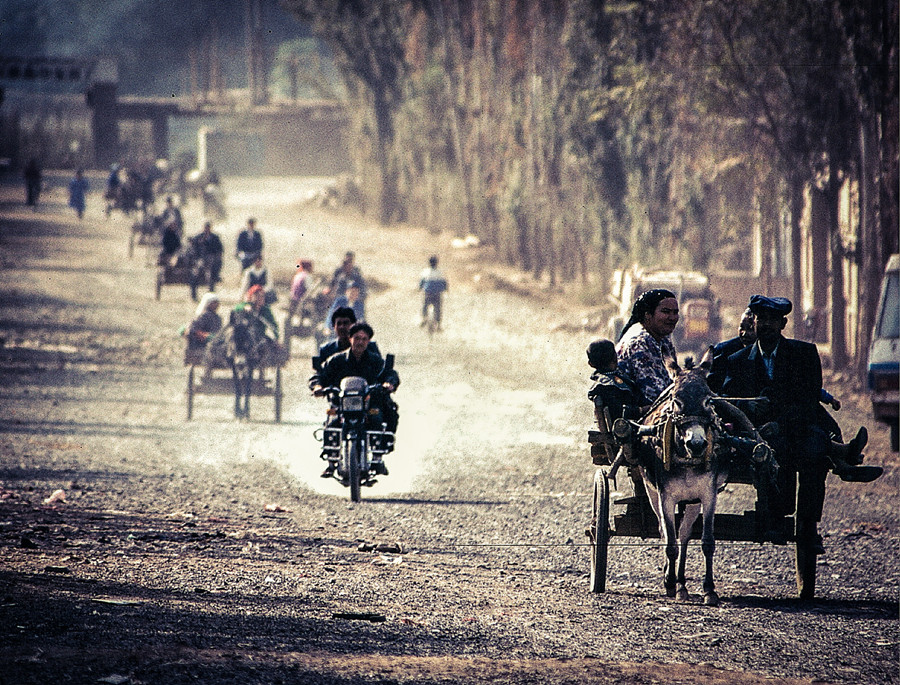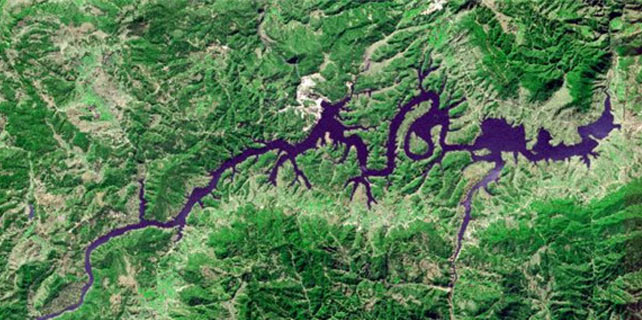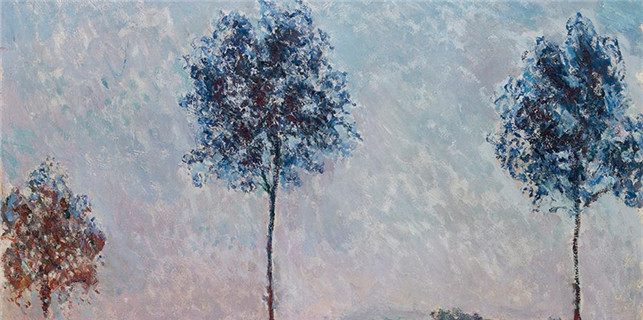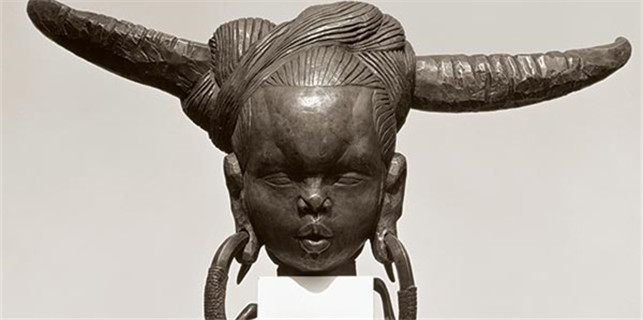In search of Turpan
 |
|
Back street in older part of Turpan 1996. [Photo by Bruce Connolly/chinadaily.com.cn] |
Having fulfilled his ambition of reachingthe Lake of Heaven, Bruce Connolly went in search of the historic Silk Road city of Turpan
Xinjiang dramatically illustrates how geology gives but also takes. Tectonic plate movements with consequential devastating earthquakes pushed up snow capped fold mountain ranges such as Tianshan while forcing adjoining land surfaces below sea level. Far from oceans, rainfall in parts of Xinjiang almost non-existent, meltwater from alpine glaciers helps sustain life. Surrounded by merciless terrain, oases have long given travellers sanctuary while realising agricultural potential. The fabled Silk Road connecting northern China with Central Asia followed a string of such oases through Xinjiang to neighbouring Gansu.
South of ice-capped Bogda Feng lies the Turpan Depression. Geologically a 'fault-bounded trough' holding an array of salt lakes, gravel plains, sand dunes, rock mountains and a volcano last erupting around 1120AD. South of the city, Ayding lake bed at 154 metres below sea level is the lowest surface point in China and fourth lowest on Earth. Turpan at 30 metres above sea level is one of the hottest, driest settlements in China. Were it not for careful water gathering, life would be impossible.
Ever since my school days I had dreamt of reaching this unique desert outpost. That dream was initially fulfilled literally through a one day visit in 1996. A passion was fueled to return.
October 1997 I was at a bus station close to Urumqi's Erdaoqiao Market. My fellow passengers mostly Uyghur men wearing distinctive square 'Doppa' hats. Once goods were loaded and secured on the roof we headed off through semi-desert, stopping at the former Silk Road caravanserai of Dabancheng before bumpily descending through a gorge (an expressway was under construction) to emerge onto a grey extensive waterless environment. Turpan, shimmering like a mirage, lay ahead.
Formerly walled, its history going back well over two millennia, Turpan has of course changed considerably since its Silk Road days. A modern city of 600,000 people has emerged featuring both high-speed rail and a recently opened airport. As a traveller it was the predominantly Uyghur Old Town with its maze of narrow alleys that attracted me. My hotel, enclosing shaded gardens, sat on the edge of that district. Just what I wanted - a vibrant area with scenes almost out of a travel book!
Most dwellings were built of adobe mud brick, often with spacious courtyards entered through wooden gates where curious youngsters would gather. Grape trellises shaded yards where food was prepared for lengthy outdoor evening dinners. Underground rooms provided shelter from midday heat. Irrigation channels ran alongside alleys thronged with children returning from school. Sitting outside small shops older men wearing a range of hats stared with inquisitiveness towards me. A girl in colourful ethnic costume, pushing a heavy black cycle, stopped, looked and smiled! Men congregated around small mosques, their bicycles or carts parked nearby. Donkey carts were still the main form of local transport in '97, carrying three to four people or loaded with melons and vegetables. It all felt so timeless even compared to my nearby hotel. Weddings, which seemed to go on for days, were busy, noisy occasions.






















